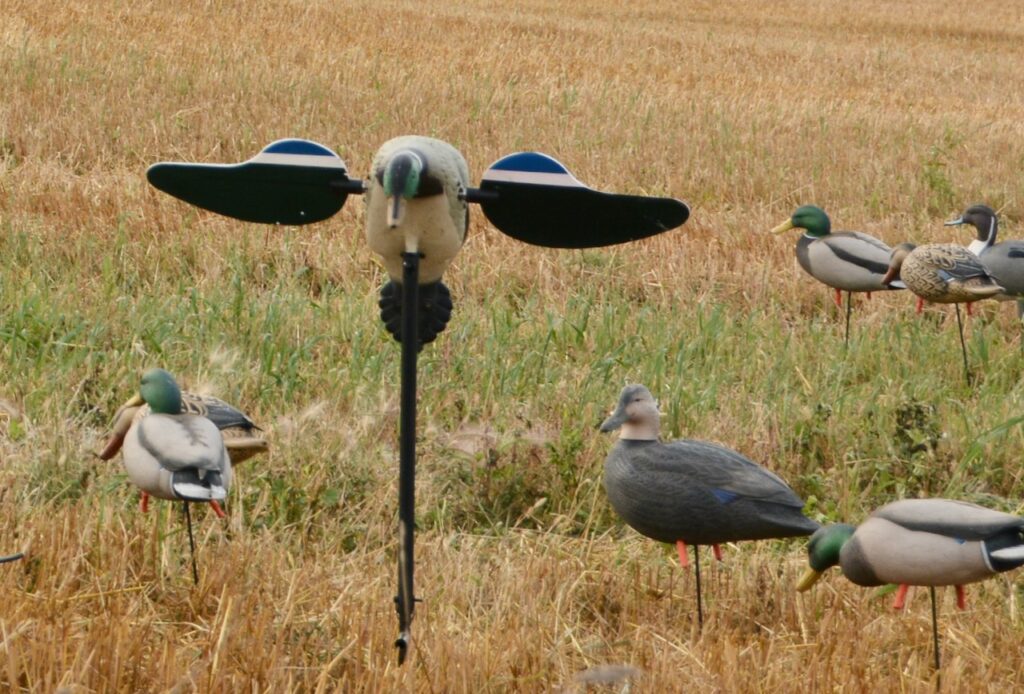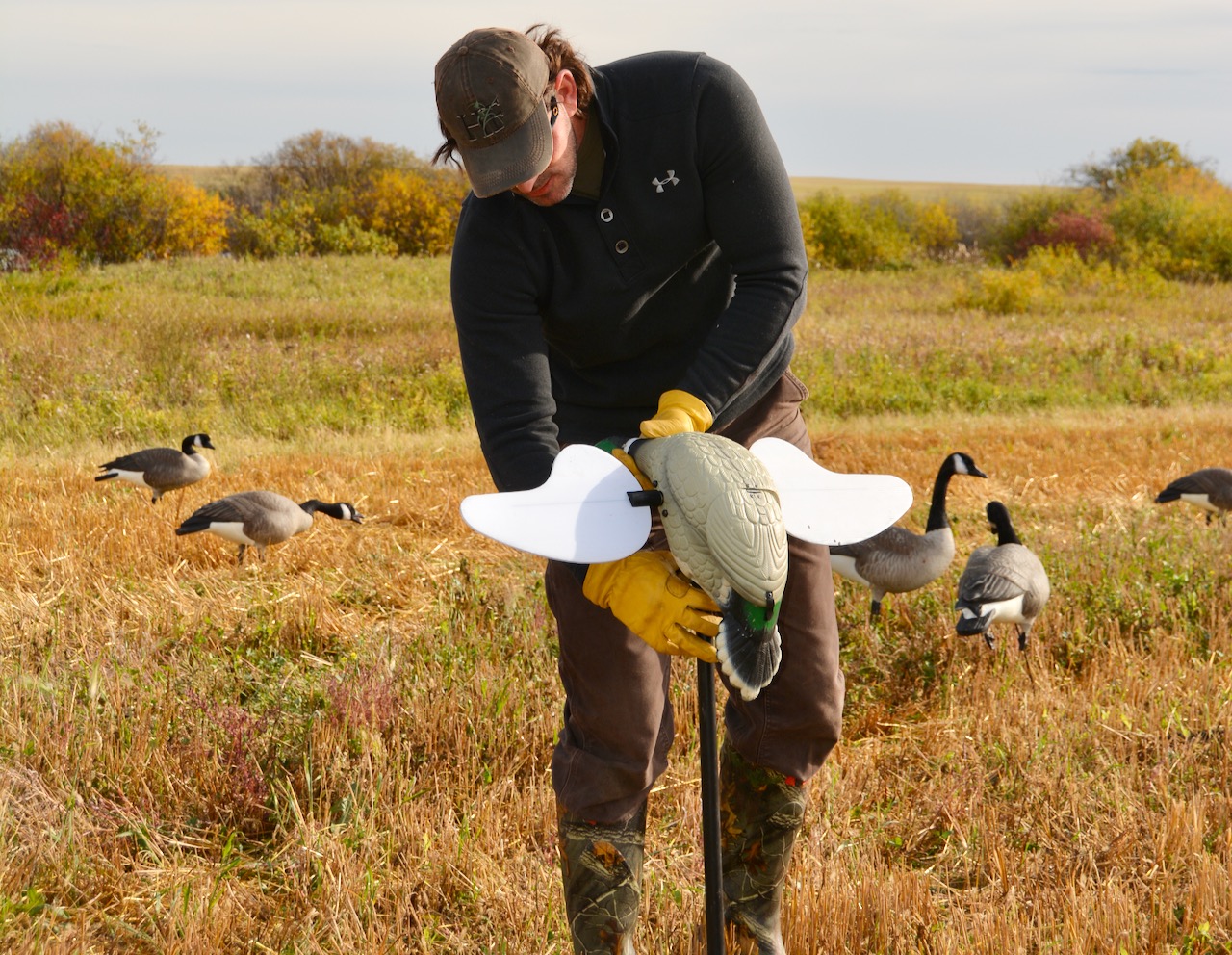Using motion decoys for ducks and geese
Advertisement
Adding motion to your decoy spread creates a touch of realism to help attract reluctant ducks and geese. Motion also helps concentrate the attention of approaching birds, making them less likely to focus on your blind.
DUCKS
Advertisement
When field-hunting ducks, spinning-wing decoys have become a mainstay; anywhere from one to four will make a significant difference in the number of birds that fully commit. Be strategic about where you place them—the leading edge of your landing zone is best.

While it’s anathema to some traditionalists, floating spinning-wing decoys are also highly effective when hunting diving ducks. I’ve had great success with just one long line of decoys and one or two spinners. I prefer a larger spread, of course, but when I’m in a hurry to set up, the long line and spinning-wing combo is a great alternative.
GEESE
Advertisement
Geese are different. As a rule, Canada geese are spooked by spinning-wing decoys. You’ll have much better luck with Clone flying decoys, kites or flagging, which provide motion at a considerably slower speed. If you’re on a combo duck and goose hunt, use spinners with remote controls so you can switch them off when Canadas approach.
Specklebelly geese are what I call “in-between birds”—at times they’re spooked by spinning-wing decoys, but seemingly less so when there’s a large proportion of snow goose decoys in the spread. Snow geese, on the other hand, don’t seem to mind the spinners, and the extra motion in your layout can be very beneficial.
While motion is of great benefit in attracting waterfowl, the bottom line is that not all birds respond similarly to the same motion, so don’t be shy to experiment.

